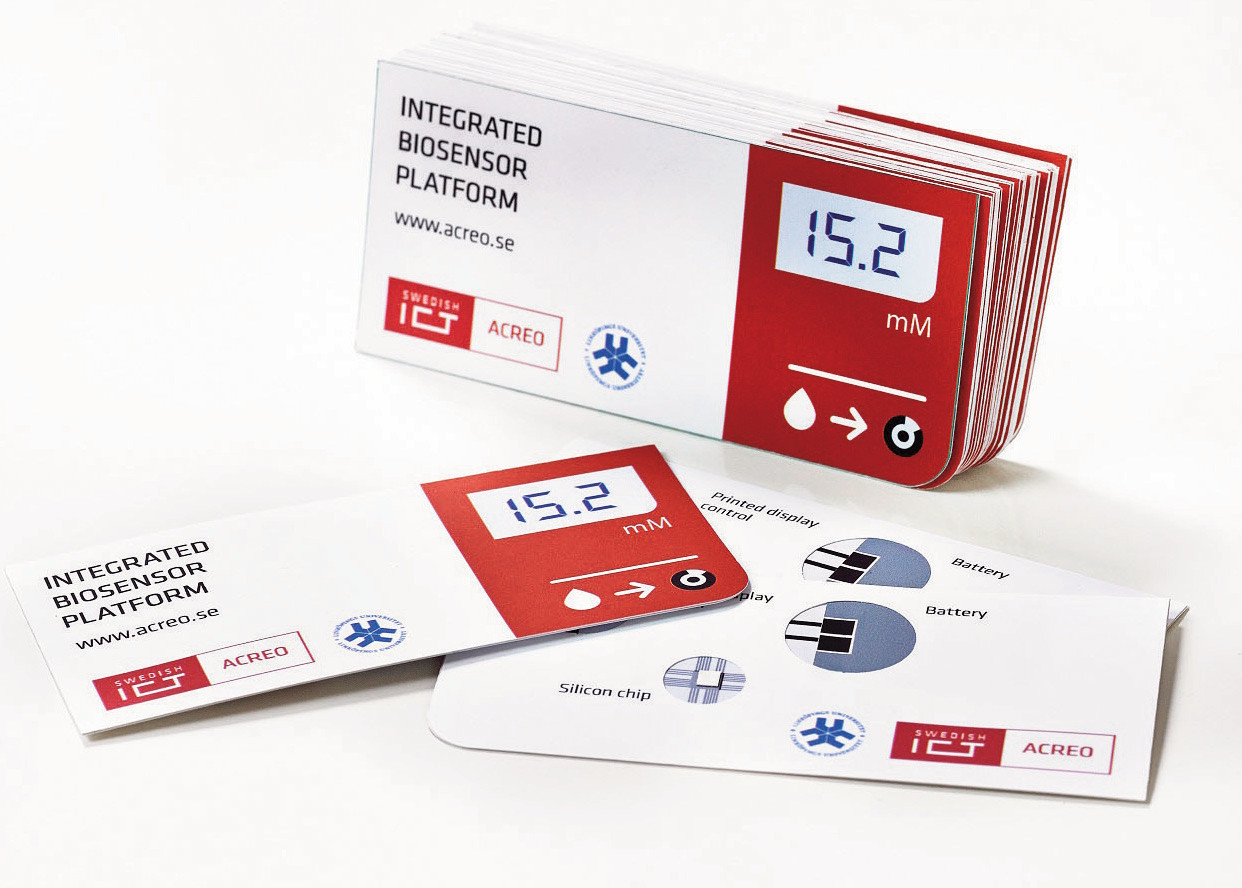Conditions

Diagnosis on the home front
In Conditions
Bookmark
Record learning outcomes
Technological advancements have transformed the medical world and in particular the diagnostics category. But what is pharmacy’s role in all of this and how does it benefit patients?Â

Medieval doctors didn’t have dipsticks, scanners and sophisticated blood tests to diagnose disease. So they held urine samples to the light. Some even took a quick swig.
In 1674, Thomas Willis, a leading English doctor, used the sweet taste of his diabetic patients’ urine to distinguish the condition from other diseases that cause frequent urination, such as infections or bladder stones. We still use the medical term ‘diabetes mellitus’ – mellitus comes from the Greek word for honey or sweet.
Today’s diagnostic technologies have thankfully moved on to allow doctors to look inside patients’ brains to diagnose stroke, dementia and other neurological diseases. They detect some microscopic cancers long before they cause symptoms and while surgery still offers a cure. And they can read a person’s risk of developing a textbook’s worth of diseases by looking at their genetic code.
Meanwhile, advances in electronics, software and biology mean that analytical systems that once occupied entire benches in specialist laboratories and needed highly trained technicians are now smaller than a shoebox, sit in the corner of the pharmacy and require only a few minutes’ training. For example, Anthony Turner, head of the Biosensors & Bioelectronics Centre at Linköping University, Sweden, developed a new instrument that monitors diabetes, kidney and heart disease, and detects some cancers.
“When I started doing electrochemistry 30 years ago, an instrument like this would have been the size of a filing cabinet, and would have cost me €10,000,†Professor Turner told the recent International Conference on Bio-Sensing Technology in Lisbon. His new instrument is credit-card sized and, in the future, you’ll probably get two for less than a pound. So how can community pharmacies help patients benefit from the diagnostics revolution?
An expanding role
Many pharmacies already measure blood pressure and levels of glycosylated haemoglobin (HbA1c) – a measure of diabetes control – and cholesterol. In some parts of England, pharmacies offer the NHS Health Check, which screens adults aged 40-74 years without a pre-existing condition for cardiovascular disease and diabetes.
However, pharmacies could offer many more services. For example, in a recent book (The Drugs Don't Work: A Global Threat), the Government’s chief medical officer Dame Sally Davies and colleagues described the risk posed by antimicrobial resistance – superbugs that don’t respond to antibiotics – as being “just as important and deadly as climate change and international terrorismâ€. In a survey for European Antibiotic Awareness Day 2013, respiratory tract infections (flu, bronchitis, cold, and sore throat) accounted for four of the top five reasons for taking antibiotics in the UK. (Urinary tract infections were the remaining reason.)
However, most respiratory tract infections are viral or self-limiting bacterial infections, so antibiotics are inappropriate. For instance, viruses cause approximately 90 per cent and 70 per cent of sore throats in adults and children respectively. Yet GPs seem to prescribe antibiotics to about three-quarters of patients with lower respiratory tract infections.
In turn, inappropriate antibiotic prescribing fuels the rise in resistance. Against this background, levels of C-reactive protein (CRP) rise when a person has an inflammatory disease or an infection. CRP ‘tags’ infected or injured cells, and helps the immune system recognise and remove pathogens and damaged cells.
CRP levels in the blood often rise to high levels in people with potentially serious bacterial infections who need antibiotics. But CRP does not usually increase to high levels during viral or self-limiting bacterial infections. Combining a point-of-care test for CRP with the patients’ signs, symptoms and history allows healthcare professionals to identify ‘low risk’ patients with respiratory tract infections who do not require antibiotics and those at high risk of having a bacterial infection that need antibiotics.
NICE now recommends CRP testing for people with suspected pneumonia. Pharmacies could also use a point-of-care test for CRP to offer low risk patients self care advice to alleviate symptoms and refer high risk patients or those with red flag symptoms to a GP or an out-of-hours service. Pharmacists could also prescribe antibiotics (or other medications) according to a patient group directive.
 Pharmacy-led initiatives are using advances in diagnostics to deliver better healthcare
Pharmacy-led initiatives are using advances in diagnostics to deliver better healthcare
HIV testing comes home
Home tests for some infections – including chlamydia and gonorrhoea – are now available. But many people remain unaware that they’ve picked up an STI. For example, Public Health England estimates that 24 per cent of people living with HIV in the UK are undiagnosed.
A change in the law in April 2014 allowed companies to develop HIV self test kits, and these reached the market earlier this year. “We want to normalise HIV testing and the best way to do that is in everyday settings,†Rosemary Gillespie, chief executive at the Terrence Higgins Trust told Training Matters.
“We know that if people are diagnosed with HIV and start treatment early then they can avoid serious complications and lead long and healthy lives. Our website provides further information about the testing options and how to access treatment and care, and for people with a new diagnosis, we would encourage them to sign up to our online service myHIV, where they can benefit from peer support and advice.â€
Dr Gillespie notes that some people prefer to get their results “outside a clinical settingâ€, such as in a pharmacy or at home. Indeed, she would like to see more pharmacies providing HIV tests. However, some people at high risk of contracting HIV have chaotic lifestyles.
They may abuse alcohol and drugs or have low levels of health literacy, for example. Graham Philips, managing director of the Manor Pharmacy Group in Hertfordshire, worries that certain patients may be uncertain about interpreting a home HIV test or where to get help if they test positive.
“It’s important that patients are signposted to the appropriate services. It’s a potential concern if you could buy an HIV test from a petrol station,†he says. “Advances in technology mean that isn’t as farfetched as it may sound.â€
Genetic screening on the high street
The amount of DNA in the human body almost defies belief. According to the publication Nature, a person’s DNA – pulled into a single, microscopically thin strand – would go from the Earth to the Sun and back more than 300 times, or wrap around the Earth’s equator 2.5 million times. Your 25,000 genes define your natural hair colour, keep your toenails growing, and influence the risk of developing thousands of diseases. Researchers and doctors have used genetic tests to screen for diseases since the late 1970s.
But in March this year, Superdrug became the first retailer to carry a genetic test – called 23andMe – for general sale. The test, which costs £124.99 and is also available online, screens for genes associated with certain inherited conditions (such as cystic fibrosis or sickle cell anaemia) and those that increase the risk of, for example, abnormal blood clotting, Alzheimer’s or Parkinson’s diseases. In addition, says the 23andMe manufacturer, the test allows users to learn more about the genetics behind traits such as frequent smoking, how they break down caffeine, and how they may respond to diet and exercise as well as tracing their family’s genetic roots.
While 23andMe says it has sold more than 10,000 kits in the UK alone, the Royal College of General Practitioners (RCGP) has condemned the test. “At a time when we have a severe shortage of GPs and family doctors are already struggling to care for rising numbers of patients with increasingly complex diseases, it is difficult to see how we will be able to deal with the extra volume of people that this initiative will undoubtedly encourage to visit their GP surgery for routine check-ups,†said RCGP chairwoman Maureen Baker.
“We fear that this scheme will only cause people unnecessary worry and anxiety. We would also discourage patients from paying out significant amounts of money for tests that, if appropriate, are available free on the NHS.†However, 23andMe says that according to its online survey, only four per cent of the 470 UK customers who responded made a special appointment to discuss the results with a doctor, genetic counsellor or another medical specialist. About 71 per cent regarded the information as extremely valuable.â€
“We believe that giving people more information about their genetic makeup will empower them to make decisions which improve their health and wellbeing,†Angela Calman-Wonson, vice president of communications at 23andMe told Training Matters. “In addition, we voluntarily share post-market surveillance data regularly with the UK regulator. We recognise that uncertainty may arise with any new and cutting-edge technology, and are seeking to engage with the RCGP directly to understand its concerns in more detail.â€
Whatever the pros and cons of 23andMe, Graham Phillips says that GPs have historically objected to diagnostic tests moving outside their control. “GPs initially objected to pharmacists offering pregnancy tests,†he remarks. “All too often, the medical profession has a response of ‘no’. We need a more informed debate.â€
From testing to treatment
It is true that testing alone is not enough. “I am a great believer in empowering people,†Graham says. “So I welcome the greater availability of diagnostic tests, which helps people take control of their health. But we need to link testing to outcomes. One of the reasons that the NHS Health Checks are not delivering as expected is that the test results are not linked to a specific outcome or treatment, other than simple lifestyle advice.â€
For example, Graham notes that about 25 per cent of the adult population has raised blood pressure (hypertension): “But of every 10 people with hypertension, four are undiagnosed. Of the remaining six, only four are treated to target. Empowering patients makes all the difference.†Graham points out that Canada focuses on empowering patients with raised blood pressure, and “does far better†at tackling hypertension.
“Pharmacists can measure blood pressure, diagnose hypertension and help, through medicines use reviews, patients attain the treatment targets,†he says. “Community pharmacy could have a big role in tackling heart disease, which remains the number two killer in the UK.†In a study published in Diabetic Medicine in 2012, Graham and his colleagues reported that education and counselling by community pharmacists improved the cardiovascular risk profile of patients with type 2 diabetes. HbA1c, blood pressure and body mass index all fell with community pharmacists’ support.
“These examples show that by diagnosing and managing disease, community pharmacists can have an immense impact on health,†Graham says. Indeed, pharmacy-led initiatives across the country are using advances in diagnostics to deliver better healthcare. But often no one outside the locality realises.
“Community pharmacists are delivering important innovations. But we are working in isolation unsupported by the NHS,†Graham says. “We need to work together with the NHS to share our insights. Our professional bodies also need to ensure national commissioning of services rather than the ad-hoc postcode approach we have now.â€
Diagnosis on the cheap
 Diagnostic innovations are likely to continue apace. For example, Professor Turner’s instrument is screen-printed on card – a bit like a poster – and blood or saliva is simply applied to a circle (see image right). Results are digitally displayed or sent to a mobile phone. At €5 each (around £3.65) – which Professor Turner expects to fall to €0.50 (around 36p) – the system could provide patients and doctors in developing countries with accessible, affordable diagnostic tests.
Diagnostic innovations are likely to continue apace. For example, Professor Turner’s instrument is screen-printed on card – a bit like a poster – and blood or saliva is simply applied to a circle (see image right). Results are digitally displayed or sent to a mobile phone. At €5 each (around £3.65) – which Professor Turner expects to fall to €0.50 (around 36p) – the system could provide patients and doctors in developing countries with accessible, affordable diagnostic tests.
The printed card could also be part of an antibiotic’s packaging, helping to determine which drug is best for the infection, or worn like a plaster or contact lenses, transmitting real-time information to mobile phones. “We're on the cusp of an entirely new era – not just for biosensing, but for measurements in healthcare and diagnostics generally,†Professor Turner told the International Conference on Bio-Sensing Technology.
“Until now, we have been used to going to a doctor, who endows us with some wisdom and retains information about us, and then waiting to see if we get better. Modern sensors and telecommunications are rebalancing this power: in the future, patients could have the information, while physicians provide a service."
Such high-tech innovations will continue to capture the headlines. But Graham Phillips comments that perhaps the most important diagnostic test for community pharmacists remains a simple tape measure. “Central obesity is linked to an increased risk of developing cancer, diabetes and cardiovascular disease,†he says. “A simple waist measurement can tell you a lot about a person’s health. We have the tools. We now need to do something about it.â€
Â
To test your knowledge on this topic, complete the team training learning module.
I welcome the greater availability of diagnostic tests, which helps people take control of their health. But we need to link testing to outcomes
